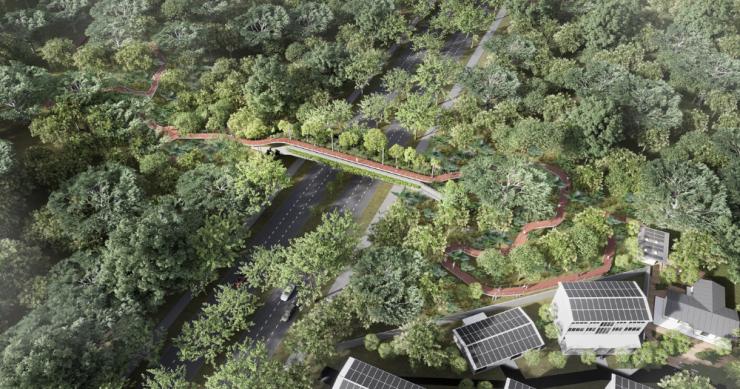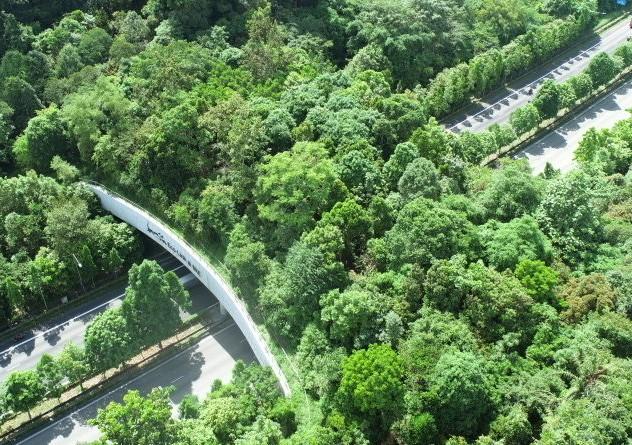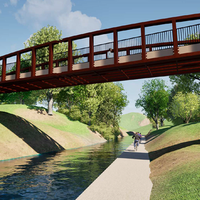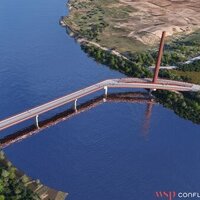The new dual-use eco-pedestrian bridge (below) is designed to facilitate the movement of animals between Bukit Timah Nature Reserve and the Western Water Catchment Area, via Bukit Batok Nature Park. It is part of a programme designed to strengthen the connectivity between green spaces to help native species.

The announcement was made at the Festival of Biodiversity hosted by minister for national development Desmond Lee. The bridge is described as “an elevated nature way”, allowing nature to cross Upper Bukit Timah Road. NPD said that the seamless connection will also allow Singaporeans to enjoy nature and learn more about ecological connectivity.
NPB has also published the latest data on the use of its first such bridge, called Eco-Link@BKE (below), which was completed 10 years ago to reconnect nature reserves that had been separated by the construction of the Bukit Timah Expressway.

As of 2021, about 100 species of fauna in total have been recorded on the 62m-long, 50m-wide, hourglass-shaped bridge. This includes 31 additional species of fauna – 14 butterfly species, 13 bird species, three mammal species, and one reptile species – that were recorded on the bridge for the first time between 2018 and 2021. Species recorded in a 2021 survey using the bridge for the first time included Horsfield’s Flying Squirrel (Iomys horsfieldii), Malayan Colugo (Galeopterus variegatus), and Sunda Slow Loris (Nycticebus coucang). NPD said species using the bridge include birds and butterflies that are usually found in forested areas within nature reserves, suggesting that the Eco-Link@BKE is a suitable habitat for such forest-dependent species and is effective in helping them move from one area to another.




